
To fully enjoy every moment on the slopes, it’s crucial to prepare your body for the demands of the mountain. After all, skiing and snowboarding require a unique blend of strength, endurance, balance, and flexibility. So if you’ve spent the summer lounging and relaxing, you might find yourself more vulnerable to injuries and burnout when you finally hit the slopes. By practicing these best exercises to prepare for skiing and maintaining good health, you’ll be carving up the slopes all winter long and enjoying every second of it.
Best Exercises to Prepare for Skiing
1. Squats
Squats are a game-changer for getting your legs ready for the slopes. They effectively target the quads, hamstrings, and glutes which are all essential muscles that support your skiing performance. Since skiing puts significant strain on your legs during turns and while maintaining posture, squats help mimic those movements, building the endurance you need to stay strong and energized all day long.

How to do it:
- Stand with your feet shoulder-width apart.
- Lower yourself into a squat position by bending your knees, keeping your chest up and your weight in your heels.
- Push back up to standing, keeping your knees aligned with your toes.
- Aim for 3 sets of 15-20 reps.
2. Lunges
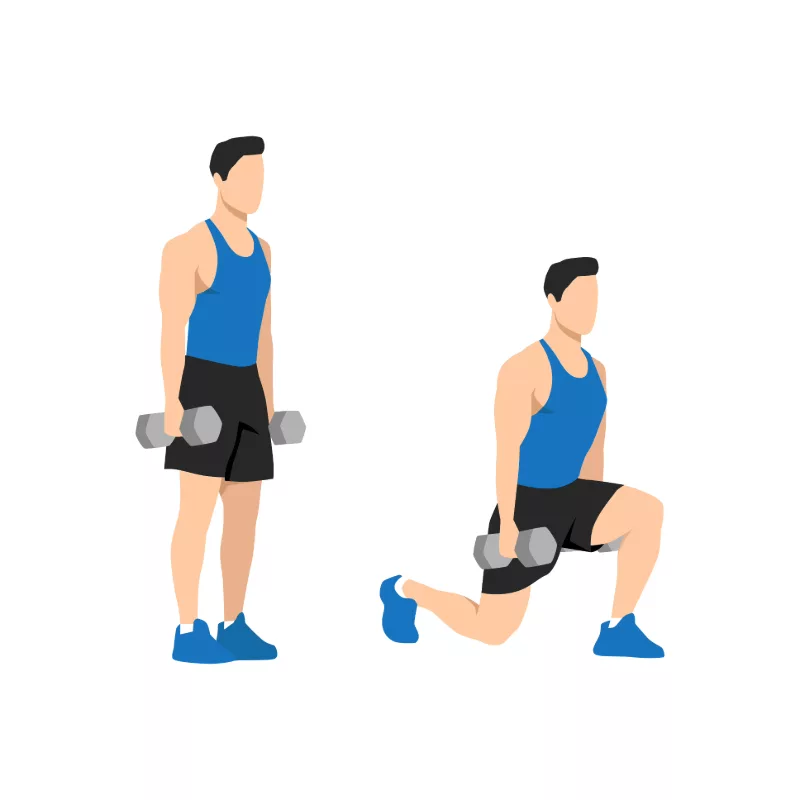
Lunges are some of the best exercises to prepare for skiing, working your quads, hamstrings, glutes, and calves. They build the strength and stability you need to stay in control on the slopes. Since the motion mimics pushing off and carving turns, lunges help you sharpen your ability to stay balanced and in command, run after run.
How to do it:
- Stand upright and take a large step forward with one leg.
- Lower your body until both knees are bent at 90-degree angles.
- Push off with your front foot to return to the starting position.
- Repeat on the other side.
- Add weights to build more muscle.
- Do 3 sets of 12 reps per leg.
3. Planks
Your core is your anchor on the slopes, keeping you steady whether you’re charging down steep runs or coasting through flat sections. Planks are a go-to move for building core endurance, which is key for staying balanced and in control. A strong core helps you hold good posture, even on tricky terrain, so you can ski longer and stronger without losing your form.

How to do it:
- Get into a push-up position with your forearms on the ground.
- Keep your body in a straight line from your shoulders to your heels.
- Hold the position for 30 seconds to a minute, engaging your core.
- Gradually work up to 3 sets of 1-minute holds.
4. Russian Twists

Skiing involves frequent twisting motions as you navigate turns. That’s why Russian twists are some of the best exercises to prepare for skiing. Russian twists build the rotational strength needed for smooth, controlled movements. This rotational movement is perfect for developing the obliques, which are key for controlling twists and turns while skiing.
How to do it:
- Sit on the floor with your knees bent and feet flat.
- Lean back slightly and hold a weight or medicine ball in front of you.
- Rotate your torso to the right, bringing the weight to your side.
- Rotate back to the left.
- Do 3 sets of 20 twists (10 on each side).
5. Lateral Ski Jumps
Lateral ski jumps are a great way to train for the side-to-side motion of skiing, building explosive leg power and sharpening coordination. These jumps mimic the fast, precise movements you’ll use while carving down the slopes. They also boost agility and balance, all while strengthening the muscles that keep your knees and ankles stable run after run.

How to do it:
- Stand with your feet hip-width apart.
- Jump to the right, landing softly on your right foot, with your left foot hovering off the ground.
- Immediately jump to the left, landing on your left foot.
- Continue alternating for 30 seconds to 1 minute.
- Do 3 sets.
6. Wall Sits
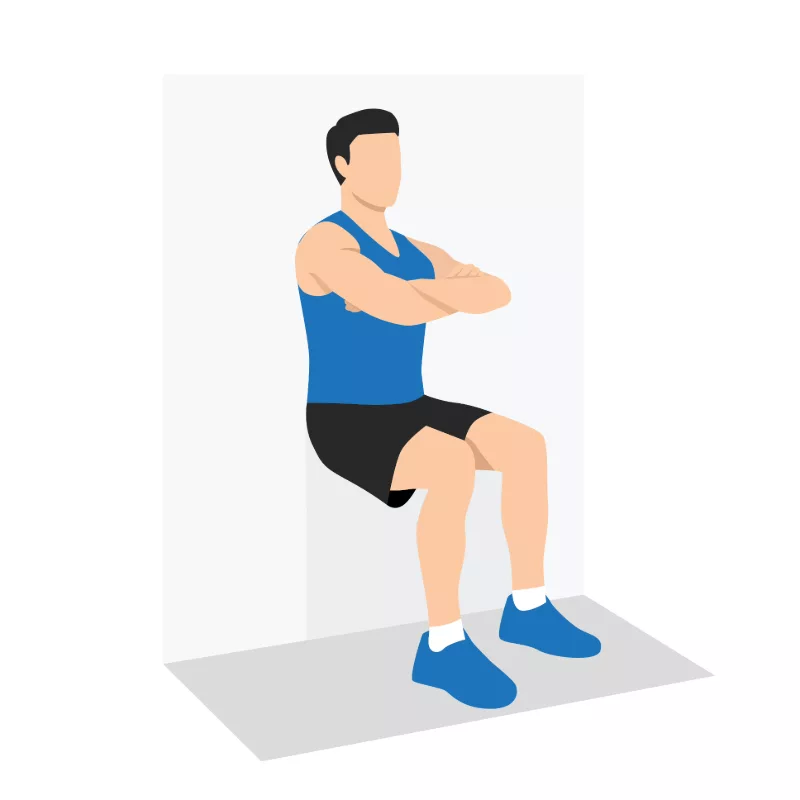
Wall sits are great for building the leg endurance you’ll need to power through those long, thigh-burning runs, making it one of the best exercises to prepare for skiing. By mimicking the semi-squat position you hold while skiing, they train your muscles to stay strong and steady, helping you fight off fatigue and keep going on those extended days on the mountain.
How to do it:
- Stand with your back against a wall and slide down into a seated position.
- Hold this position with your knees bent at 90 degrees.
- Aim to hold the position for 30-60 seconds.
- Do 3 sets.
7. Single-Leg Deadlifts
Single-leg deadlifts are fantastic for boosting your balance while strengthening your hamstrings and glutes, both vital for stability on the slopes. This exercise really tests your balance, which is essential when navigating uneven or tricky terrain, too. Plus, it strengthens the muscles that support your lower back and hips.

How to do it:
- Stand on your right leg, holding a dumbbell in your left hand.
- Hinge at your hips, lowering the dumbbell toward the ground while extending your left leg behind you.
- Return to the starting position and repeat for 12 reps on each leg.
- Complete 3 sets.
8. Box Jumps
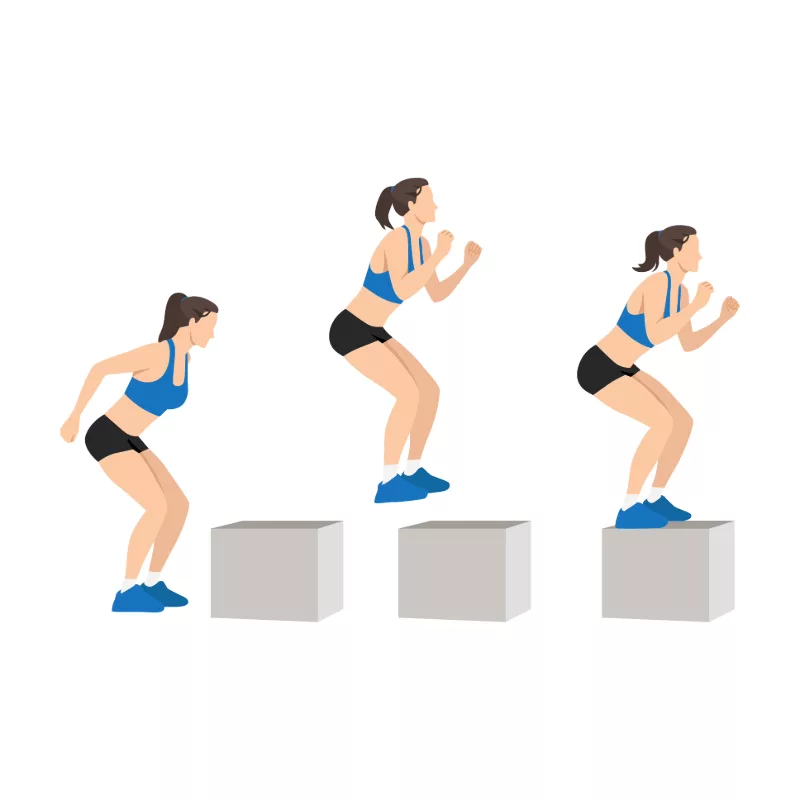
Skiing demands sudden bursts of power, whether you’re launching off jumps or rapidly shifting your weight. Box jumps are perfect for developing the leg strength and explosiveness you need for those moments. This plyometric exercise mirrors the movements required to tackle moguls and rough terrain, making it an essential addition to your exercises to prepare for skiing.
How to do it:
- Stand in front of a sturdy box or bench.
- Jump onto the box, landing softly with both feet.
- Step back down and repeat.
- Aim for 3 sets of 10 jumps.
9. Leg Blasters
Leg blasters combine squats and lunges into one workout to build serious lower-body endurance. They’re perfect for preparing for the leg fatigue that often accompanies a long day of skiing or snowboarding.
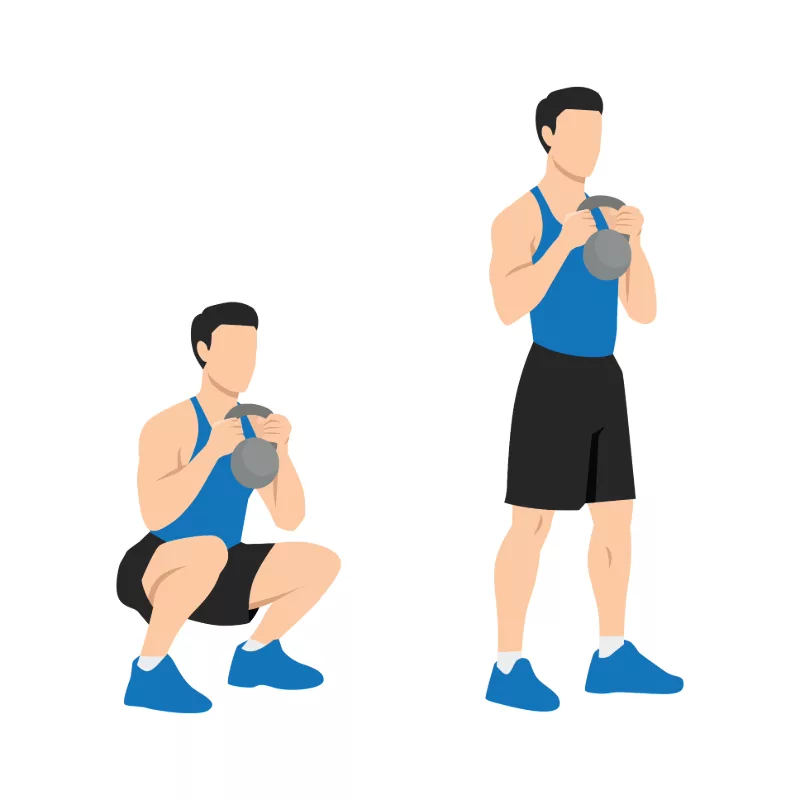
How to do it:
- Perform 10 bodyweight squats, followed immediately by 10 alternating lunges on each side.
- Repeat for 3 sets with minimal rest in between. Feel free to add weights to make it more challenging.
10. Cardio Training
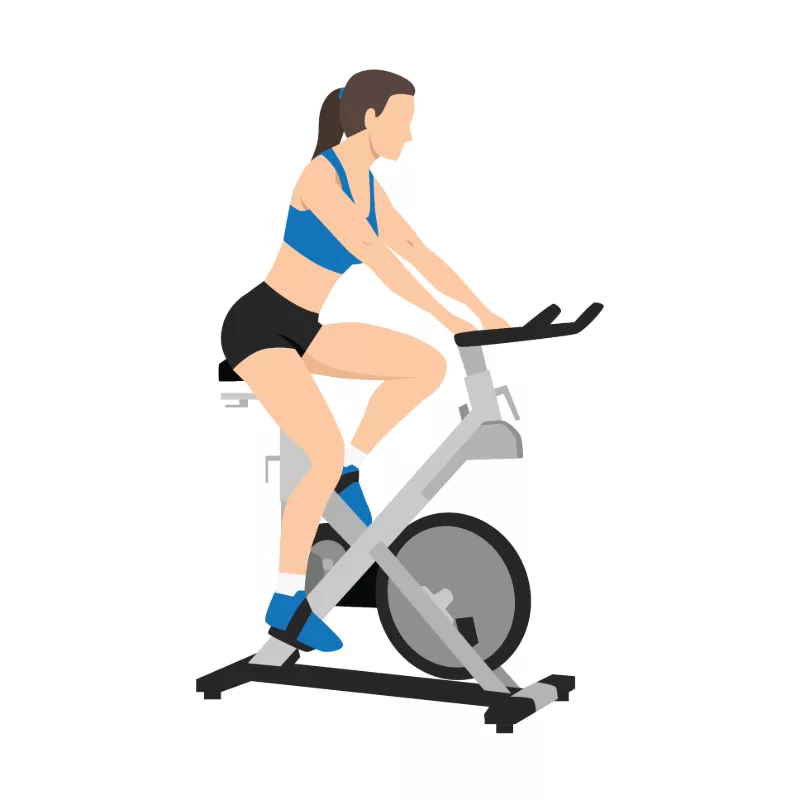
Don’t forget about cardio! Skiing requires a good amount of cardiovascular endurance, especially at higher altitudes where the air is thinner. A strong cardiovascular system will allow you to handle long days on the slopes without getting winded.
What to do:
- Incorporate activities like running, cycling, or rowing into your routine, aiming for 20-30 minutes of moderate to intense cardio 3-4 times a week.
- High-Intensity Interval Training (HIIT) is also great for boosting your stamina and replicating the bursts of energy skiing requires.
Preparing for skiing isn’t just about avoiding sore muscles or fatigue. It’s about maximizing your enjoyment and performance at any age. By incorporating these best exercises to prepare for skiing into your fitness routine, you’ll develop the strength, endurance, and balance needed for a more confident, safer, and enjoyable time on the mountain.